Waterjet cutting addresses various problems, often related to the diversity of materials that can be cut. It's often chosen for its versatility and the responsiveness it provides to its users. The technology also offers various advantages in the overall production process.
How can a water jet cutting machine help improve the different production phases: finishing stage, workpiece removal, welding...?The cutting speed of a water jet machine (compared to laser cutting, for example) is often considered as a liability to its use.
Therefore, the question remains: How do you deal with the abrasive for obtaining optimum results from a cutting speed point of view? How to optimize the operating cost?
And on top of that, how to improve the productivity of the waterjet cutting station while compensating for the drawbacks associated with cutting speed?Metal-Interface interviewed Eric Le Strat, sales manager at Resato, who offered us some insight to help address these challenges, based on his technical experience.
Water jet cutting to improve the component production process
Before tackling the more technical aspects of abrasives and improving productivity, it’s important to point out that waterjet cutting technology helps gain in precision during the cutting process of materials, producing chamfers and cutting components or sets in 3 dimensions.
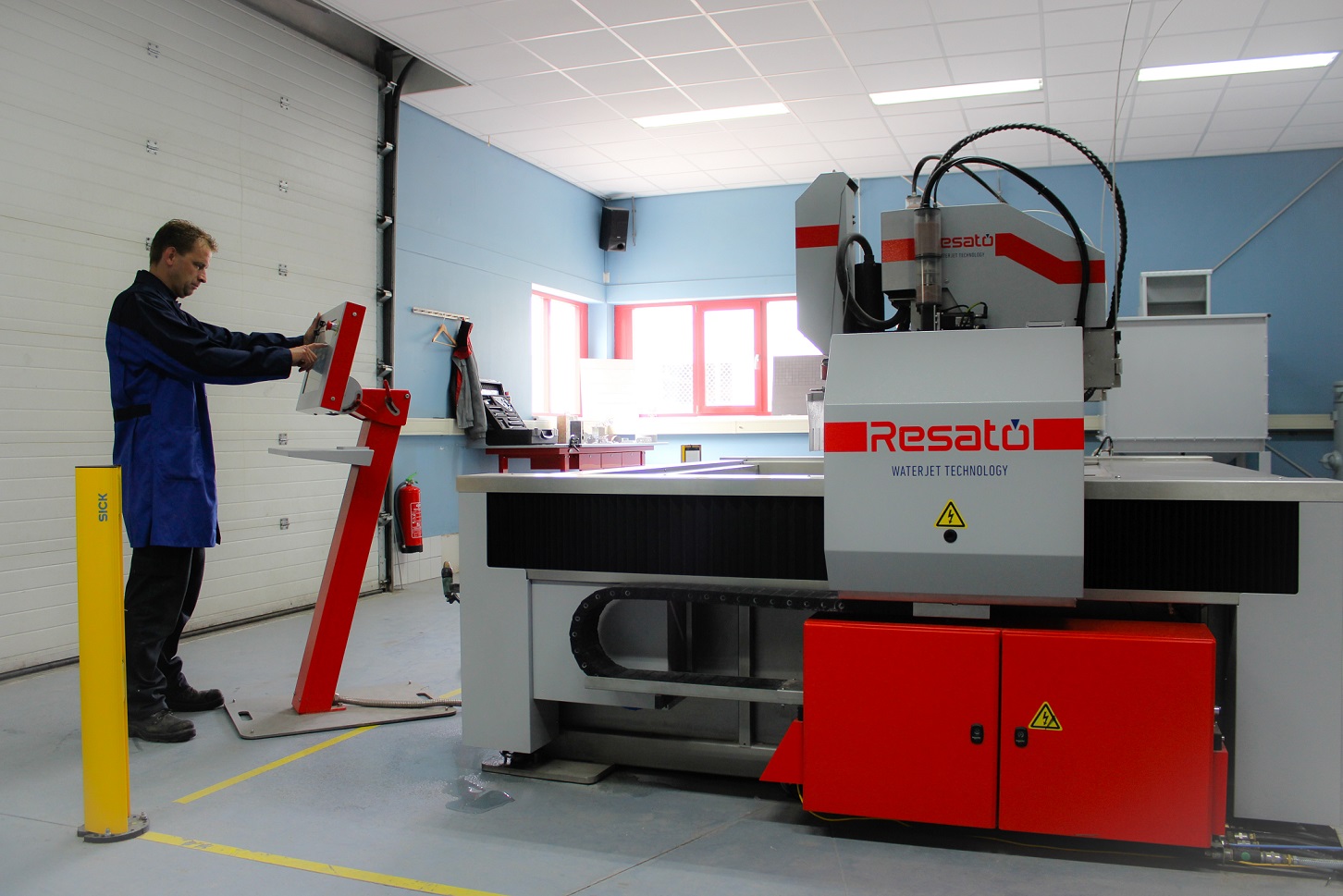 As a result, finishing times (deburring in particular), machining component removal and assembly can all be considerably reduced.
As a result, finishing times (deburring in particular), machining component removal and assembly can all be considerably reduced.
Why is that? Simply because the precision of the cut limits the machining removal and surface finish, which are expensive. Furthermore, water jets avoid the constraints of quenching, deburring or overheating, found in laser cutting, oxy-cutting, plasma, for example.
Eric Le Strat gave the example of a customer who manufactures kneader machines for the production of paper, as well as the parts that oxygenate the water in the decontamination stations: "These are large scale kneaders, 2 to 3 metres long and 1.5 metres in diameter. They consist of very large paddles welded on a drive shaft (machined). Waterjet cutting allows for precise paddles, helps weld them on a drive shaft, which is machined, and for the lot to be stabilised. Waterjet cutting has contributed greatly by limiting the number of machining hours."
Water jet cutting machines can replace milling machines, particularly to carry out roughing close to the finished surface.
Finally, another practical application of water jet cutting is preparing for welding. Making a chamfer with a water jet machine offers precision and an ideal angle for welding, and allows for deep penetration of the weld bead into the material in order not to carry out a "central" weld, not a "peripheral" weld.
Abrasive: a balance needs to be found
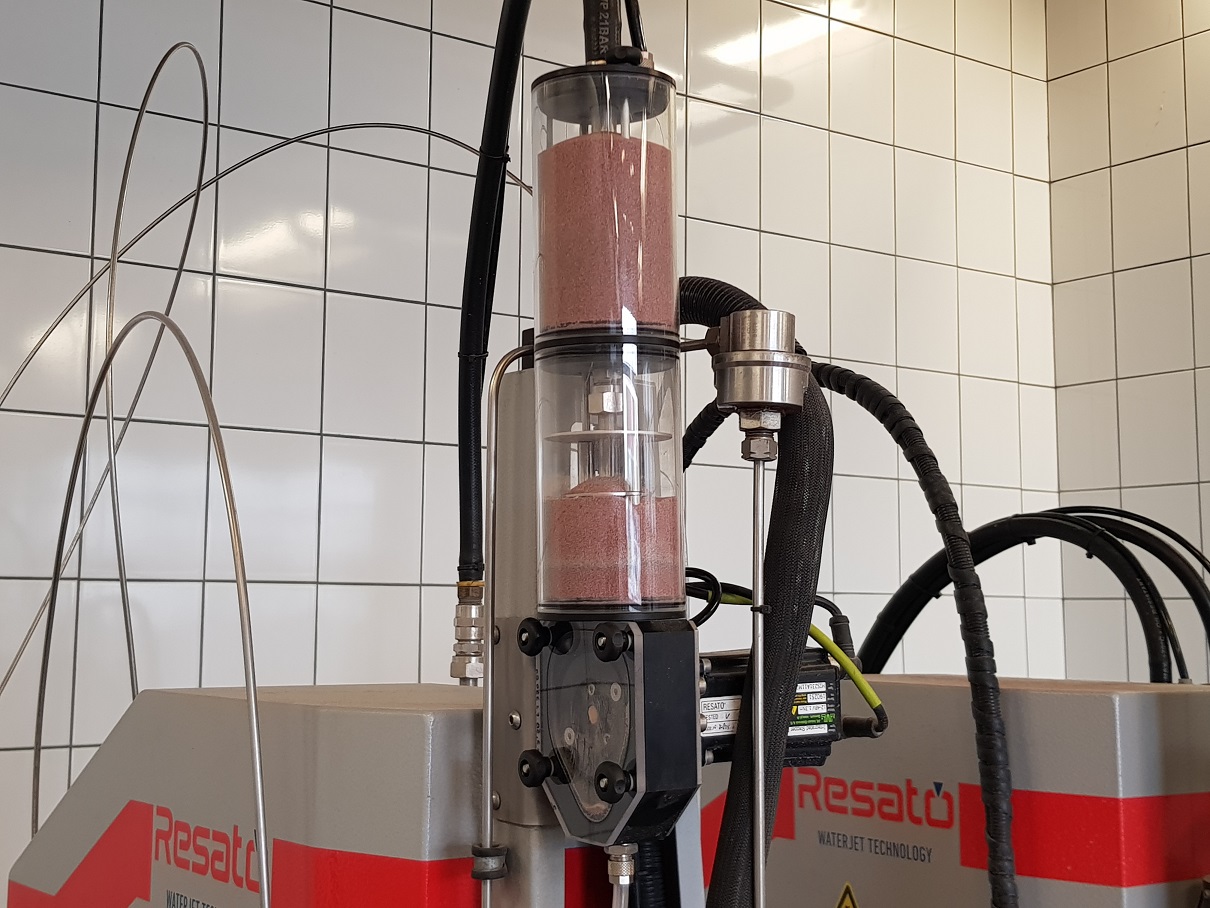
Theoretically, kinetic energy calculation is one of the key elements in calculating the most consistent balance between abrasive dosing and water jet pump pressure adjustment. The kinetic energy (KE) is defined by its theorem: KE = 0.5 x mv2 (m is the mass and v is the speed or velocity).
Here's an example: if a car (2 tonnes) hits a truck (38 tonnes), the main parameter will be m, mass, which will take precedence over the speed (130 km / h for the car against 90 km / h for the truck).
With water jets, the phenomenon is quite similar. In other words, there's both the projected mass that is, the amount of abrasive, and the square of the jet velocity dependant on the pressure.Therefore, each material and material thickness has an "ideal" energy velocity. And this energy velocity is controlled by pressure (speed) and the proper command of abrasive dosing. Once this aspect has been mastered, the abrasive / pressure balance needs to be adjusted to the advance speed of the machine.
Eric Le Strat adds: "increasing the amount of abrasives (i.e. the mass projected) can be tempting in order to get more kinetic energy, except that the perverse effect of too much mass is that the whole mixture will lose a lot of speed if you do not have enough water to blast the abrasive grains out. As a result, you also lose kinetic energy. »
"We could also increase pressure to play on the square of the velocity (see kinetic energy). Cutting would be faster, but the excessive pressure would cause more damage on the pipes, connectors, joints etc. Consequently creating higher maintenance costs. In addition, past a certain amount of pressure, the speed of the jet doesn't allow for a proper mixture of grains and the projected mass drops, which in fact also reduces the energy of the jet... "
The question is finding the balance between the pressure to be used to make the process reliable and not too expensive, and the mass of abrasives to be projected with this same amount of water, which will allow you to maintain a certain velocity and ensure consistency with the speed ratio of the machine.
Eric Le Strat gave a point of reference: "the most optimal ratio between the abrasive and the quantity of water is in the range of 1 to 7. Consider the example of a 0.25 nozzle and pressure of 3500 bar, the amount of water is 1.74 litters per minute or 1740 g of water. The necessary abrasive would be in the range of 250 grams allowing for a water / abrasive dosage that pierces while maintaining decent jet speed. This is a theoretical value because, depending on the material and its thickness, the absorption capacity of the energy differs. Each level of absorption must be in keeping with a projected energy. Since the energy of the jet is perfectly mastered, the only thing that remains is to adapt the speed ratio to obtain an optimal result"
The machines need to be equipped with motors to manage the abrasive.
Thereby, machines equipped with abrasive dosing by a step motor, along with an electronic control, allow for dosing the abrasive almost to the gram, to calculate the energy projected onto the component and ensure proficient control and management of the abrasive.
Reducing workforce on a water jet cutting machine
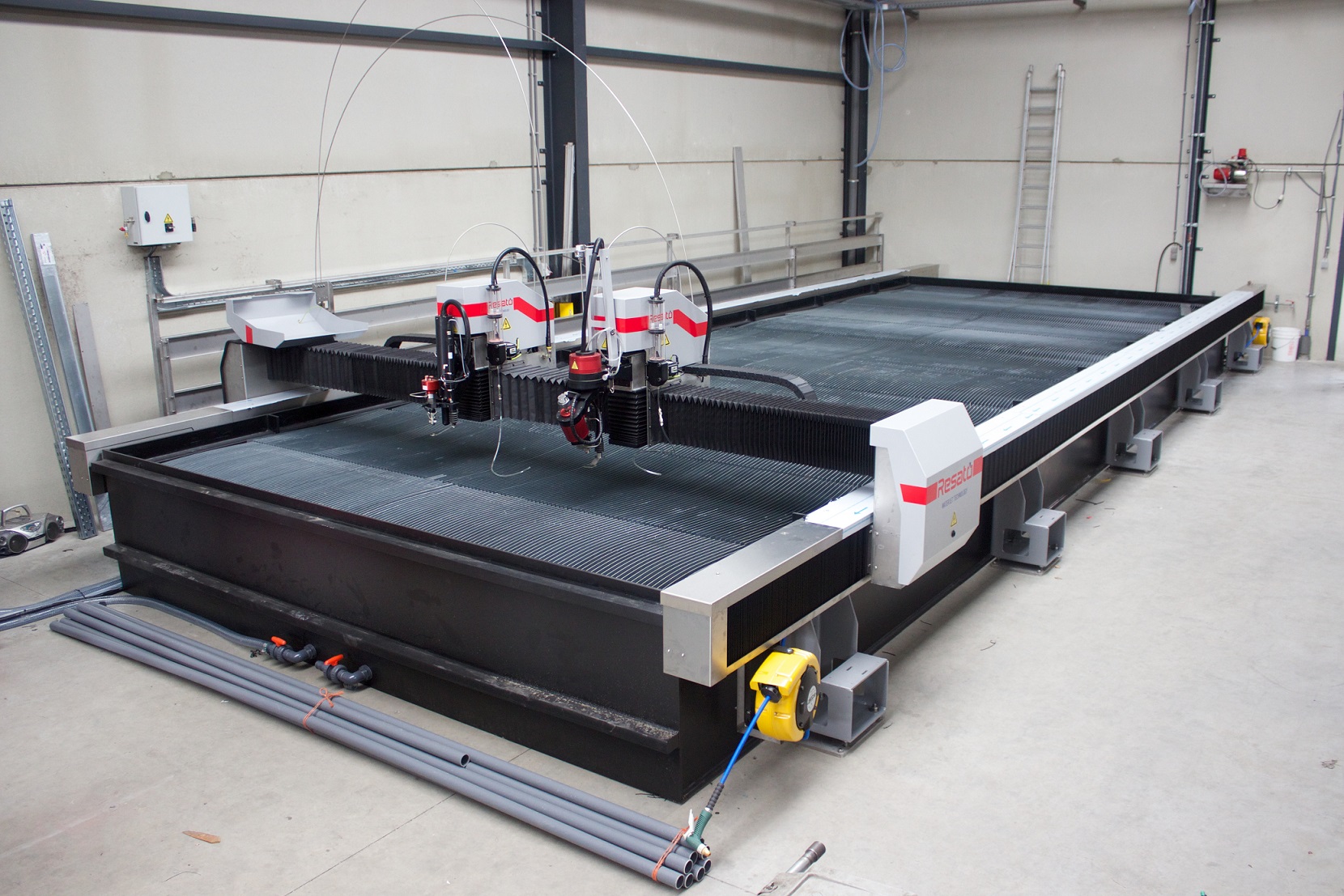
The productivity of the machine can be improved by launching a series of automatic cutting programs. As a result, the machine can keep producing for several hours without the need for an operator. This type of solution consists in creating and launching a series of programs with different materials and thicknesses.
Before launching the production sequence, the machine operator installs the various materials to be cut onto the water jet table. With each new program, the machine automatically checks that the thickness indicated in the program is consistent, then starts the relevant program.Here's an explanation from Eric Le Strat "This also allows you to carry out long programs during the night, saving the hours during the day for emergencies and responsiveness."
Improving the efficiency of a waterjet cutting machine
Limiting inaccessible areas during the cutting process
As a general rule, safety sensors are installed around the machine. The operator cannot access this area, preventing him from working in concurrent operation time, unloading components for example.
Another explanation from Eric Le Strat "another solution is to have an embedded security system closer to the hazard zone. With a water jet machine, it's located on the bridge. It seems senseless to block the entire machine with safety sensors all around the machine. By loading safety sensors on the bridge, the hazard zone linked to the cutting head and the bridge is secured."
The advantage of this system lies in the ability to load and unload while the machine proceeds to cut, all the while meeting safety standards, protecting the bridge and the operator and gaining in ground surface. Square metres associated with the peripheral protection of the machine are gained and operators no longer have to wait for the end of a program to access components.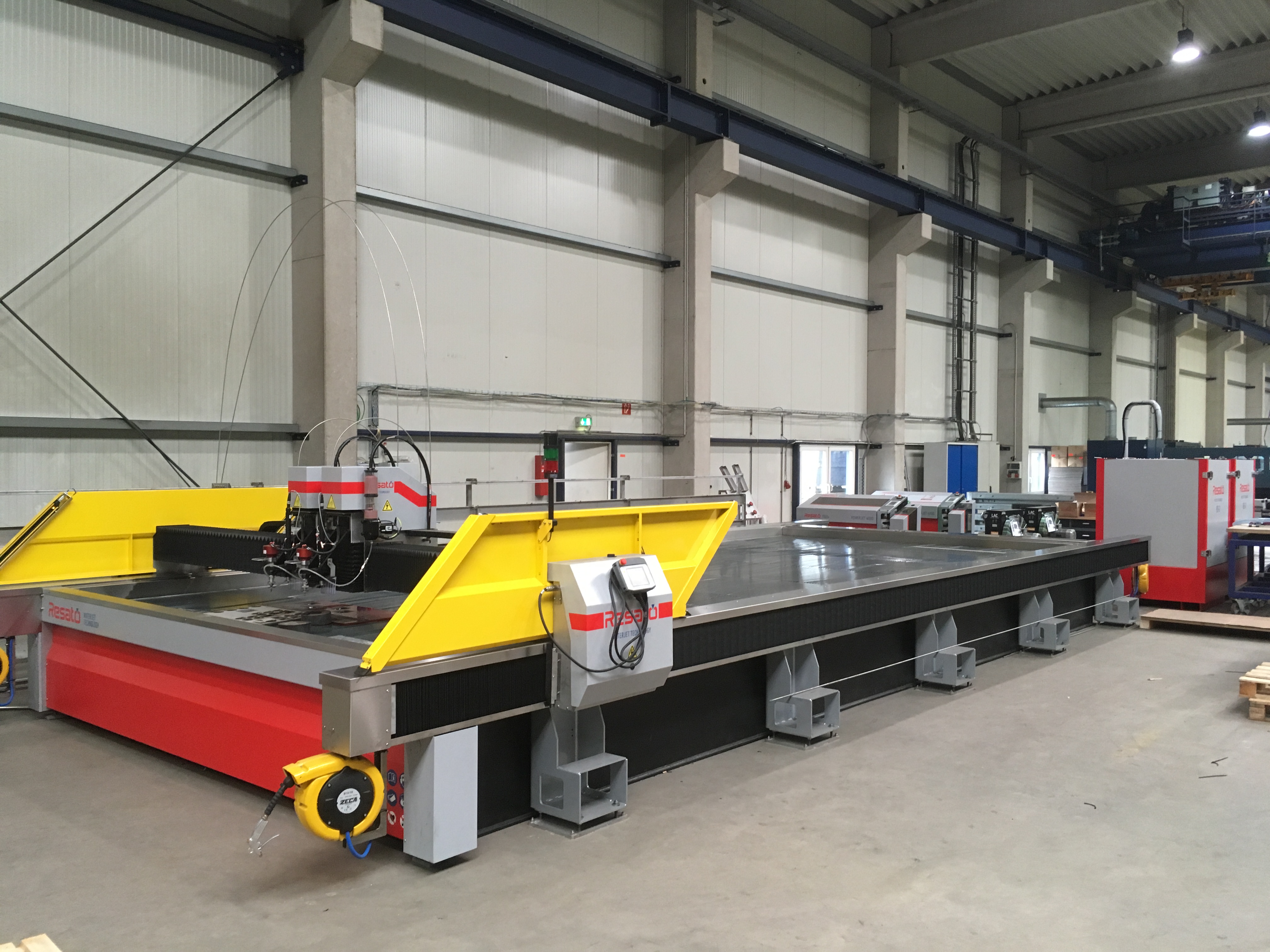
A large waterjet cutting table
Improving the production of a waterjet cutting machine also involves the use of large cutting surfaces (larger cutting table). This is closely related to the sequence of programs and concurrent operation time. A wide production range can be achieved, and the operator's tasks during production (therefore in concurrent operation time) possible.In Eric Le Strat's opinion "All in all, don't put your sights solely on the cutting speed. It is the overall process that's important: the production preparation, during the cut, and after the cut, just like the component output in concurrent operation time while the machine is in production."
Learn more about RESATO! - Check out RESATO's waterjet cutting machine catalog
Copyright - reproduction prohibited without the written permission of Metal-Interface
Metal-Interface takes great care to protect your privacy: when you submit a request or ask a question, your personal information is passed on to the supplier concerned or, if necessary, to one of its regional managers or distributors, who will be able to provide you with a direct response. Consult our Privacy Policy to find out more about how and why we process your data, and your rights in relation to this information. By continuing to browse our site, you accept our terms and conditions of use.
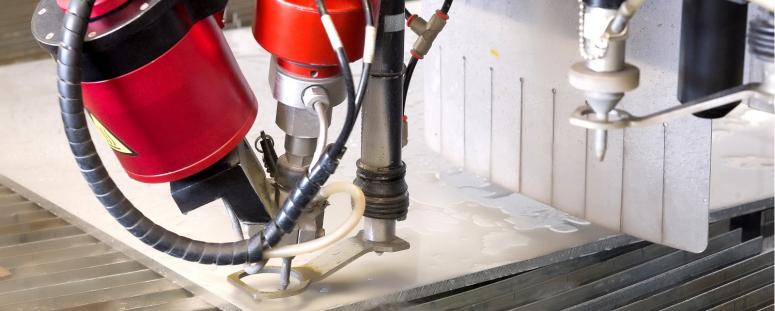 Water jet cutting Technical article
Water jet cutting Technical articleWater jet cutting: aspects to consider before investing
